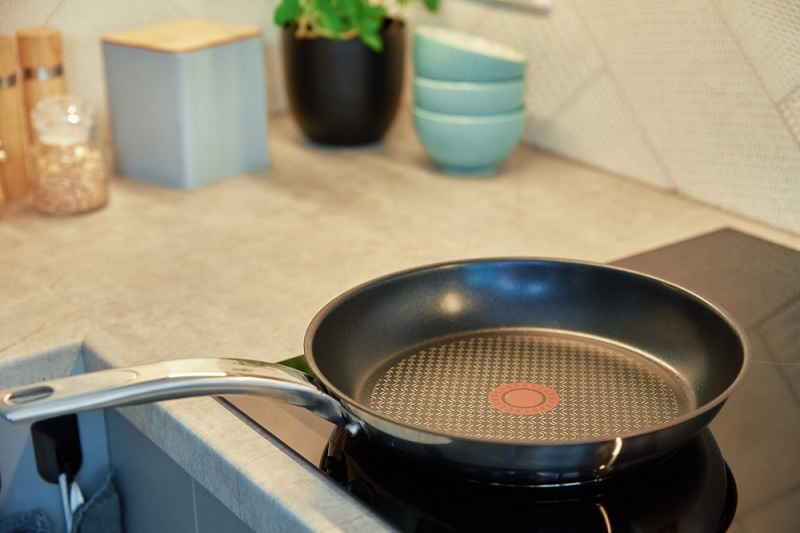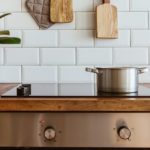We’ve all heard that heating an empty pan can be disastrous, but why? What is it about heating an empty frying pan that causes so much damage? Well, as we’ll see below, heating an empty non-stick frying pan can ruin your dinner and the pan itself.
Overheating a Non-Stick Pan
When you heat a pan empty, the body of the pan has to absorb all of the heat.
Now, for something like a cast-iron skillet, this isn’t really a big deal. The sides and bottom of these skillets are so thick that it can absorb all of the heat and gently come up to cooking temperature.
With a non-stick frying pan, though, the sides and bottom are really thin. This is to speed up the heating up time and for better heat distribution. The trouble is, these pans heat up so quickly that heating them empty can cause the metal to warp. It can also cause the non-stick coating to reach temperatures far higher than it is rated for.
Most non-stick coatings on frying pans can go into the oven between 180 and 260 degrees Celsius. An empty pan on a high heat on the hob can reach this temperature in minutes. If your non-stick pan reaches these temperatures a lot, the non-stick coating will begin to deteriorate, and could let off toxic fumes.
So, overheating a non-stick pan can ruin the metal and the non-stick coating, and be bad for your health. It isn’t great for your food either.
The shock from the heat can cause meats to tense up and lose some of the flavour, or cause the outside of the food to burn long before it is cooked. So, using pans at high heat doesn’t do anything any good.
Can You Use High Heat Settings with Non-Stick Pans?
To use a non-stick pan at high heat safely, you can put whatever you’re cooking into the pan before putting it over the heat. This way, as the pan heats up, some of the heat will be redirected into what you’re cooking.
You will likely find that cooking this way means you never need to get the pan too hot anyway.
Non-stick pans are made from thin metal, and the non-stick coating can be ruined by high heats of over 180 to 260 Celsius.
So, cooking on a medium heat with a non-stick pan will get the job done perfectly and preserve the metal and the non-stick coating for many other cooking sessions.
Using this method also ensures that the food won’t burn or tense up during cooking. It will have a relaxing time in the frying pan, and you’ll still achieve beautifully seared steaks and a great deal more.
We hope this look at non-stick pans and using them at high heats has been helpful. Give the cooking method above a try. You’ll likely find that your pans stay in a better condition for longer and that your food is a bit tastier too.
If you reached this cooking article too late and your non-stick pans are already too far gone, don’t worry. Chef’s Pick has the best non-stick pans available in the UK right here.

Scott is a writer and a passionate home chef. His passion for cooking began when he was 10 years old. Scott has been writing professionally for over five years now and loves to combine his passion for cooking with his day job.


